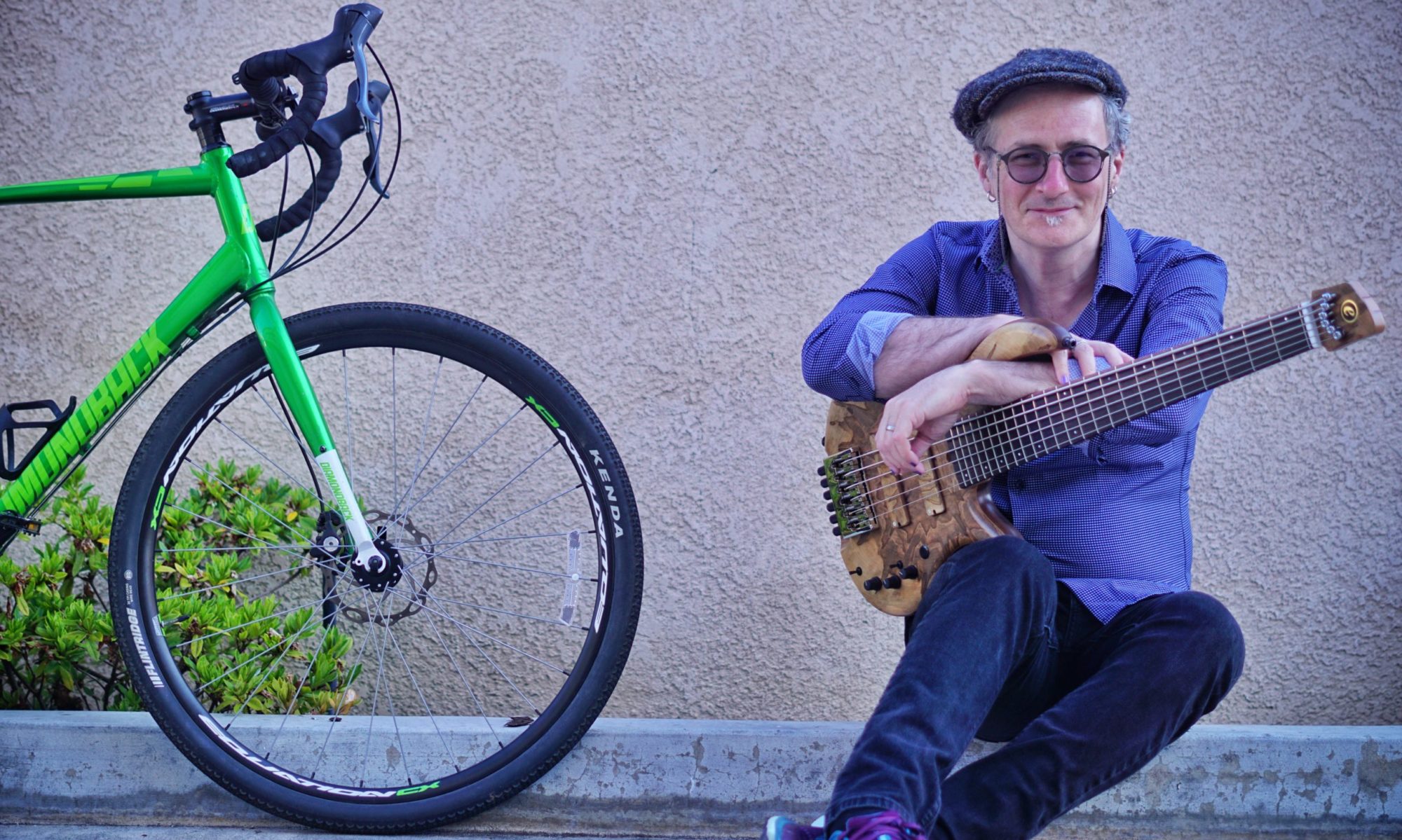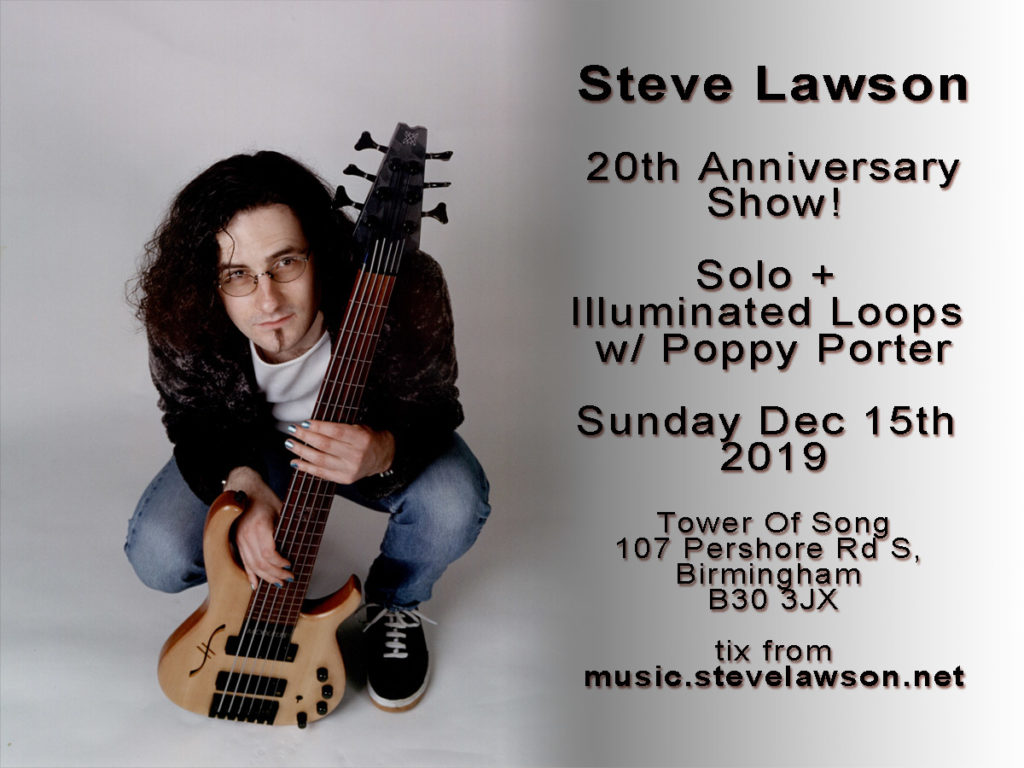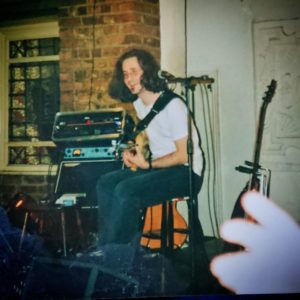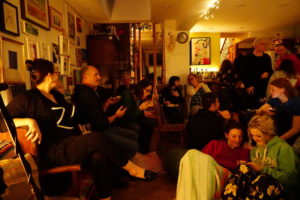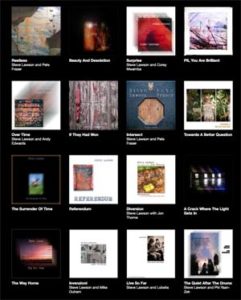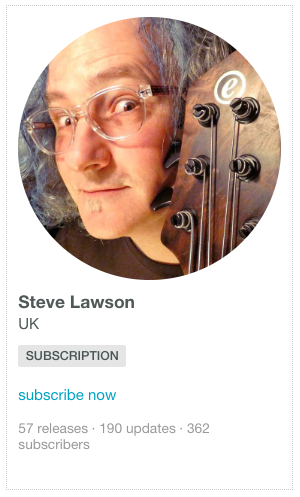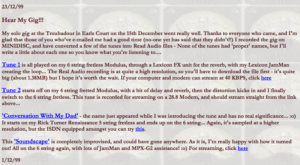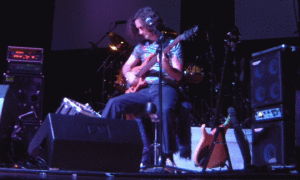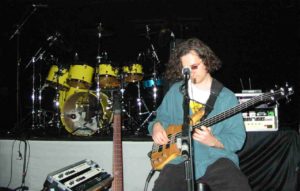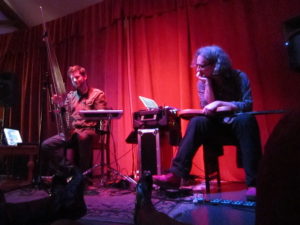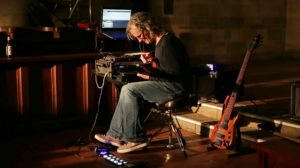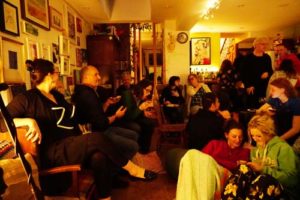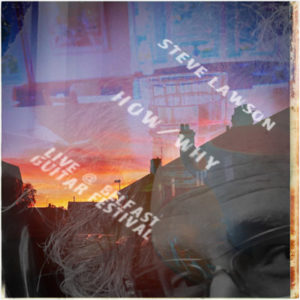Right, so my 20th anniversary gig is coming up fast! I’m super excited about it, and wanted to tell you a little more about the non-musical PhD research bit of the evening (if all you want is practical info about that, skip to the end 😉 )
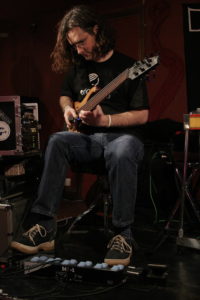 But first, I want to talk about improvisation and specialness. One of the tricky things about being an improvisor is that making a gig ‘special‘ is never going to be about the setlist. If you go and see a Greatest Hits tour, or that thing where a band plays a classic album top to bottom, you know what you’re getting, and the enjoyment is linked to your history not just with the band, but your memories of those particular songs. And your expectation is linked to that. The promotion of concerts, and even the language that we use to get friends to come with us to gigs, is built around the motivating power of familiarity, nostalgia and the safe expectation that you know roughly what’s going to happen…
But first, I want to talk about improvisation and specialness. One of the tricky things about being an improvisor is that making a gig ‘special‘ is never going to be about the setlist. If you go and see a Greatest Hits tour, or that thing where a band plays a classic album top to bottom, you know what you’re getting, and the enjoyment is linked to your history not just with the band, but your memories of those particular songs. And your expectation is linked to that. The promotion of concerts, and even the language that we use to get friends to come with us to gigs, is built around the motivating power of familiarity, nostalgia and the safe expectation that you know roughly what’s going to happen…
But, as someone who makes it all up as I’m going along, I don’t have that list of track names on which to hang a set of expectations (for me or you!) I don’t get to do a set of ‘songs I don’t normally play live!’ as a special treat, but on the other hand everything is stuff I’ve never played before, and thus every gig is a completely unique treat for whoever shows up. That is – over 20 years of talking to my audience – one of the things that comes up most often as being the ‘wow‘ moment at a gig – the realisation that this music would never happen again. Back when I was playing a mixture of improvised tunes and things people were more familiar with from my records, that was mixed with people who were super-happy that I’d played their favourite tune, and sometimes the two experiences were combined, because I’d played a familiar tune and made it new by taking it off in a new direction.
(for those who joined us recently, the point at which I stopped playing versions of things off my records was when I realised that all the magic in those records, for me, came from the fact that they were improvisations (that’s always been my recording method of choice, with a few notable exceptions around the time of Behind Every Word) – so the recreation of them resulted in an oversimplification of what was special about the original, and a split in terms of the improvised music being FOR that place and time, and made in collaboration with that audience and space, and those that were tunes I was playing in order to trigger a memory or sell a CD or two… in a nutshell 🙂 )
So I’m left pondering of all this from two angles – one is how to market a 20th anniversary gig that doesn’t have a bunch of old tunes in it – how to create a sense that this gig is the culmination or the celebration of 20 years of work, when it will be demonstrably an hour or so of completely new work. Though when I say ‘completely’, the process of being an improvisor is an evolutionary one – you are both bound by your physical relationship with your instrument(s) and any sounds you’ve pre-programmed/selected for it, but also freed by the permission you’ve given yourself (and crucially are able to feel from the audience) to play what feels right for that moment. Defining the aspects of the moment is quite an interesting task – those that are present, the conversations that take place, the music that plays before you go on, the specific placement of the music gear, the length of time since you were able to practice (gigs with a ‘warm up’ are palpably different from gigs where you go from chatting to friends to playing in the space of two minutes), and of course any preparatory work you’ve been doing – developing ideas, expanding your vocabulary and listening to music that may influence your sense of what the music ‘ought’ to be right there.
The language around the process and practice of improvisation is thorny and rich with the potential to contradict another musician’s entire sense of what they’re doing and why (so if you’re an improvisor who doesn’t see themselves in this description, that’s absolutely fine 😉 )
But the key thing is that the ‘specialness’ that we collectively experience at a gig where we expect to hear a set of songs we know, get to hear them at high volume with cool lights and excellent posing and dancing from the band is a very different type of specialness from the utterly unique sensation of going to see an improvised show and knowing that you are IN it. That if you weren’t there, it would be different. That anything you’ve said to the artist before they play will shape it, that your smiling and nodding is felt in a deeply practical way. The music is for you, you are present in it, we make it together, and the sense of place is embedded in it. It’s not just the case that a gig on a tour where the set list is largely the same is remembered by what went wrong in a particular place, or how crazy the audience were… Every set of music is a collaboration, and for me that results in a massive amount of releasable music… 71 albums in the last 20 years, at the latest count…
There’s a lot of discussion (and scholarship/writing/theory) that places live music and recorded music as opposing experiences, where one is meant to be better than the other, or one embodies qualities that the other can never share… but for me – in a way that has grown throughout my PhD research so far – the relationship is a cumulative one, where one informs the other, where the recorded work is both a product of the live gig and a way to revisit and experience in an entirely new way the audio bit of the experience. Removing the sense of place from the experience – the smell of the venue, the lighting, the price of the beer, the journey to get there, the dressing up (all the things Walter Benjamin told us in 1935 were the rituals of concert-going) are stripped away and we’re left with a trace. But it’s a trace that we can revisit, that allows us to experience it away from that context, to hear it on headphones, on a train, in a car, in bed, in the bath, with friends. We can project onto the music recording whatever set of meanings, images, mythologies and emotions we like, uninfluenced by the gestural quality of the performance (note: if you’re a subscriber, go read the essay I wrote about my Belfast Guitar Festival gig – it digs deep into this idea!) It enables us to talk over it, to read to it and sometimes it becomes that reminder of the magic of the gig. It reverses the nostalgia-relationship of falling in love with songs on an album then going to hear them live, and instead invites us to experience unique new deeply personalised music at a live event and then to revisit the recording for its nostalgia.
Fans have been doing this under their own steam for decades – I remember visiting Camden Market and see a number of stalls devoted to cassette bootlegs of classic bands. For fans who already had all the officially sanctioned studio and live records, these filled in extra knowledge, provided the social capital of hard-found experiences and foraged expertise, but also meant a gig that you were at might show up as a thing to be revisited. However, they were rarely official, rarely well produced, often terrible quality, and didn’t come with any real connection to the artist. Being a self-archivist was a rare practice – such that Frank Zappa’s predilection for recording everything and producing live albums that combined his favourite bits from different takes became a defining trope in his public persona, in the story of his idiosyncrasy.
But from here – as a self-releasing, self producing artist with a desire to make the best work I can – it feels like a way of taking back my music life from the constraint of making-a-product marketing-a-product recouping-the-costs-of-a-product. Because even the Kickstarter model – hailed by so many as the new mechanism of indie sustainability – required a level of emotional investment in a future wow that exhausts me and demands of the product a level of hype that is wholly unsustainable if the product comes along 6, 7, 8, 9, 10 times a year (such is the quest for novelty cache in the pre-funding market, that some artists have done entirely unrepeatable offers, scorching the earth for themselves and others in the process).
So by improvising I get to make music FOR that situation, but by recording it I get to build that catalogue that documents the journey, that captures the unique music and packages it in a way that isn’t about reminding the live audience of the moment they coughed or the funny thing that was said, (my live audience is WAY too small and geographically constrained for that to be meaningful) but recognises the unique musical aesthetic parameters of making things up from my particular set of creative interests in response to the stimulus of a room full of curious amazing people… The entire thing becomes more episodic, almost like a podcast or a Netflix digital box set, even while each album is experienceable within the semiotic boundaries of ‘an album’. The decision to treat it as an episode in a story, or as an album that soundtracks your life for years is entirely in the hands of the listener. The agency to make it be what you want it to be is yours as the listener, and isn’t constrained by my sense of what it might be FOR.
But of course – and this is where the research bit comes in – absolutely none of this summary may be in the minds of a specific audience (beyond the fact that I’ve seeded it by writing this screed in the first place! We’ll dig through that at the analytical phase!) – and even though the impetus to do this was a series of conversations with listeners over the last 20 years, the actual thoughts, ideas, experiences and expectations of a given audience are likely to be way broader than this… so as part of the research for my PhD we’ll be talking about this before and after the gig on the 15th.
DETAILS
So, starting at 6.30pm, we’ll be having a pre-show discussion about improv, about live music, about people’s specific expectations and reasons for being there, and how it fits within the rest of their life-with-music. It’ll be wide open, there’s no sense at all that there are right and wrong responses, and it’ll be recorded. Because of all that, there’ll be a consent form to sign (you can’t just go around recording conversations with people and writing PhDs about them without the proper ethics clearance, of course!) but the conversation is just a chance to talk about it all. To ask questions, and for me to find out what’s going on in your heads when you show up.
And again, after the gig, we’ll have another chat. Because it’s an Illuminated Loops gig, I’m sure a lot of the questions and comments there will end up being about Poppy’s artwork and its relationship to the music, but that’s all great. It’ll be another open forum to talk about your experience of the gig, what you remember, what you liked, didn’t like, what was exciting/confusing/good/bad/etc. etc.
Does that sound like fun? Good. Now, go get a ticket from Bandcamp and as soon as I get my ethics submission from the Uni signed off, I’ll send you the form with a full description of what’s going on that you can sign and return to me. 🙂
I’m SO looking forward to playing for you, but also to talking about making music. This is the stuff that goes through my head as I’m cycling round Birmingham, walking round shops, lying in bed at night… I’m fascinated by what, how, why and with/for whom we make music. And your voice as the audience is often one that artists ignore. So I’m listening… 🙂
